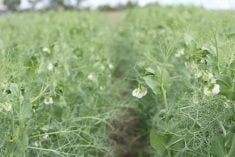Fed cattle steady
CAMROSE, Alta. (Staff) – Fed cattle sales in Western Canada opened the week steady on moderate offerings and local packers bid steadily because of the good inventory, reports Canfax.
Premiums were offered for high yielding, good quality, uniform cattle.
Overall averages were up 25 to 50 cents from last week. In Alberta, liveweight steers sold for $73 -$77 per hundredweight compared to $93.27 last year.
Heifers were slightly lower.
In Alberta, sales ranged from $70.75 – $77.25 cwt. compared to $92.04 a year ago. D1, D2 cows ranged from $37 to $51 per cwt.
Read Also

Prairies have variable soil moisture conditions
The dry weather in the west was welcome for preserving grain quality and advancing harvest, but it has resulted in very dry soil moisture conditions.
In the western cow trade, prices were steady to a dollar lower this week. Volumes were steady as was packer demand. Canfax expects no improvement in prices over the next couple of weeks. American feedlots are well supplied and quality will determine prices.
In the Western Canadian feeder trade, feeder cattle also traded steady this week. While there was some interest in grass cattle, sales were mixed. Volumes were up one percent from last week, but down 23 percent from last year.
Prices for feeders are expected to remain steady.
Bred cattle prices
In the bred cow trade, plain types were severely discounted with bred cows ranging from $360-$850 and bred heifers ranging from $425-$900.
The United States Cattle on Feed report estimates there are 8.3 million head on feed as of Feb. 1, compared to 8.6 million at the beginning of January.
February cattle on feed numbers are still about 102 percent of 1995 totals.














